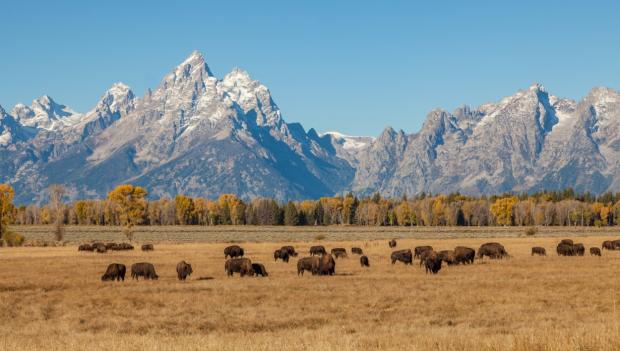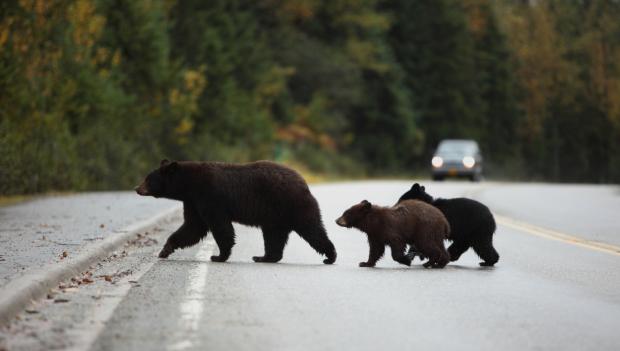Top 10 Tips for Respecting Wildlife in Nature

From the black bears that roam our southeastern forests to the moose that inhabit the north; the mountain goats that gingerly pick their way through the Rocky Mountains and the pink rattlesnakes that coil in the sun at the bottom of the Grand Canyon, the width and depth of wildlife in our country is as diverse as the states in which they live. We are lucky to share our public lands with a wide array of wildlife. But with that good fortune comes a responsibility to respect the animals we may cross paths with when we are enjoying nature. With World Wildlife Day observed in March, it’s the perfect time to learn, or refresh your memory on, the rules and best practices. By following the tips below you can ensure not just your own safety in the great outdoors, but the safety of wildlife, too.
Remember these 10 essential tips for respecting wildlife in nature.
1. Stay Informed
One of the best things you can do when visiting public lands is to stay updated on the latest news pertaining to the park or forest you are visiting. Before hitting the trails, check in with the ranger station and inquire about park-specific rules and animal activity. Rangers will be able to let you know if certain trails are closed due to bear activity, or if mating or migrating seasons have prompted closures. If there’s no ranger on duty, check for informational postings at trailheads.
2. Maintain a Safe Distance
There’s nothing more exciting than rounding a corner to spot a bison grazing in a distant field or a fox bounding across the trail. But while you may be tempted to get closer for a better look at the wildlife, it’s crucial for both your safety and the safety of the animal that you maintain a safe distance. In Yellowstone National Park, rangers recommend staying 100 yards away from bears and wolves, and at least 25 yards away from all other animals including bison. A good rule of thumb to follow is that your presence should not impact the actions of the wildlife in any way. If an animal notices and responds to you, you are too close and need to back away.
3. Take Smart Photos
It’s fun to snag Instagram-worthy photos of the animals you see in the wild, but use caution when taking photos. Aside from the temptations you may feel to sneak just a little bit closer to get a better shot, keep in mind that using a flash on your camera can stress the wildlife. Taking photos can also draw your attention away from your surroundings, and you should always be diligent and focused while in the presence of wild animals. Whenever possible, use long-range lenses to catch those award-winning shots from an appropriate distance.

Recommended: The 9 Best Wildlife Experiences in America
4. Don’t Feed the Wildlife
This one seems obvious but is worth repeating: you should never, under any circumstances, feed the wildlife. Even if an animal appears to be begging, or looks underweight, feeding is still off limits (although underweight animals can and should be reported to a park ranger). This includes “accidentally” feeding the wildlife by having a messy campsite, not using wildlife-proof containers while backpacking and littering. When an animal begins to associate humans with food they can become a nuisance, often resulting in the need to relocate or even euthanize the animal.
5. Follow the Leave No Trace Principles
Before you head into the wild, make sure you are familiar with the seven Leave No Trace Principles. By following these principles you can ensure that your time in nature will not be detrimental to the animals and environment. The seven principles are:
-Plan ahead and prepare
-Travel and camp on durable surfaces
-Dispose of waste properly
-Leave what you find
-Minimize campfire impacts
-Respect wildlife
-Be considerate of other visitors
6. Use Caution When Driving
When driving in parks and forests, remember to obey speed limits and keep an eye out for animals crossing the road. Animals always have the right-of-way, so slow or stop at any indication that an animal may be crossing your path. Some animals, like female bears with cubs, prefer the protection that the roadside brings, which increases the likelihood that she or one of her sows could be struck by a car. It’s also important to remember that animal sightings can cause unexpected road congestion and traffic jams, so be alert for stopped or slowed traffic and drive accordingly.

Recommended: 7 Bucket List Whale Watching Camping Trips
7. Hit the Trails After Breakfast and Before Dinner
Wildlife are most active at dawn and dusk. To avoid an unwanted confrontation and to give wild animals the space they deserve, hit the trails during the hours after breakfast and before dinner when you’re less likely to have a run-in.
8. Follow the Park Rules
Park rules exist for a reason and it’s important to follow and respect all of the rules. If a park does not allow dogs, for example, don’t try to sneak your pooch onto the trail. Even if dogs are allowed, they should never be allowed to run on the trails off-leash. A park’s rules may feel arbitrary, but know that restrictions are in place in order to protect vulnerable plants and animals.
9. Read and Respect Signs
Signs posted in wild areas are there to convey important information and should be read and respected. Park officials will often post signs to inform visitors of wildlife activity or closures for animals that are mating or raising young. These signs keep not only the wildlife safe but you, too, as animals that are mating or raising young can be particularly aggressive and dangerous to humans.
10. Report Interactions With Animals
Even if you are following all of the rules and do your very best to respect the wildlife, you might turn a corner and come face-to-face with a moose, bear or other potentially dangerous animal. If that happens, it’s important to leave the area as safely and quickly as possible and go straight to a ranger station to report the interaction. Park officials will use your information to keep other hikers informed of wildlife activity and to close off sections of the park if necessary. Likewise, if you see sick or dead animals, don’t intervene, and report them to a ranger.